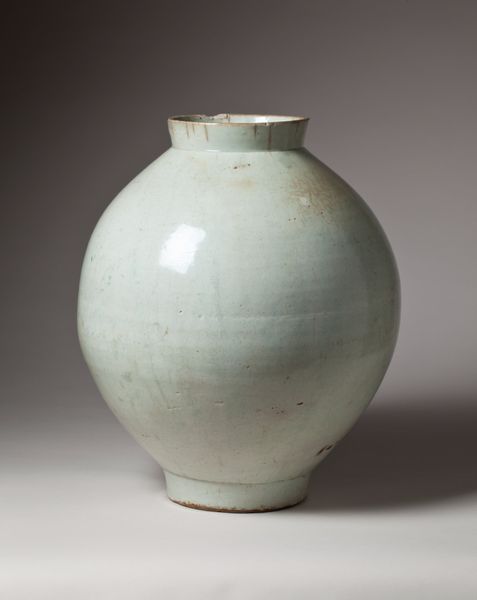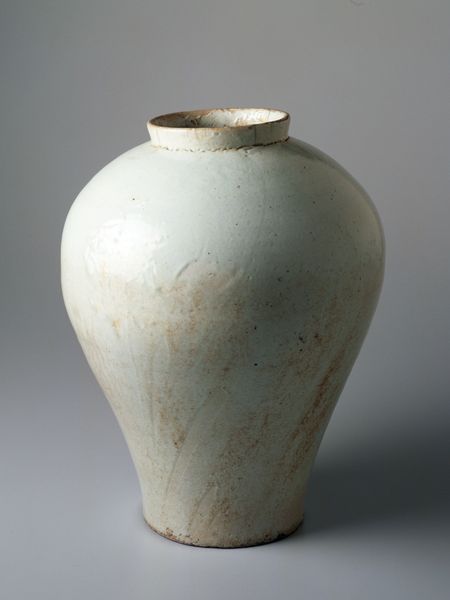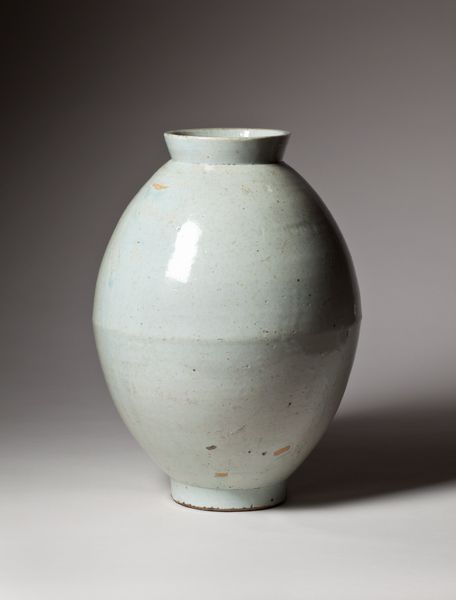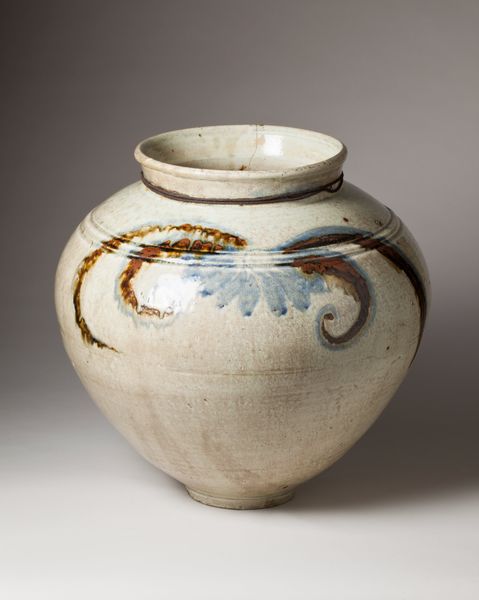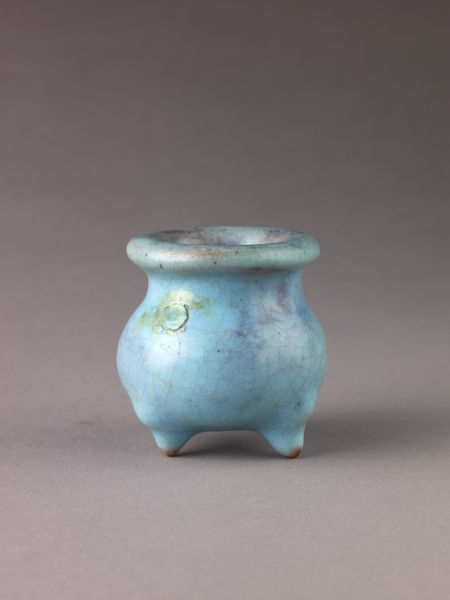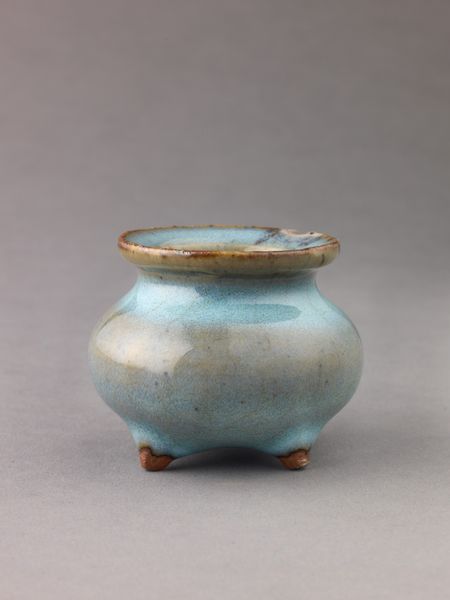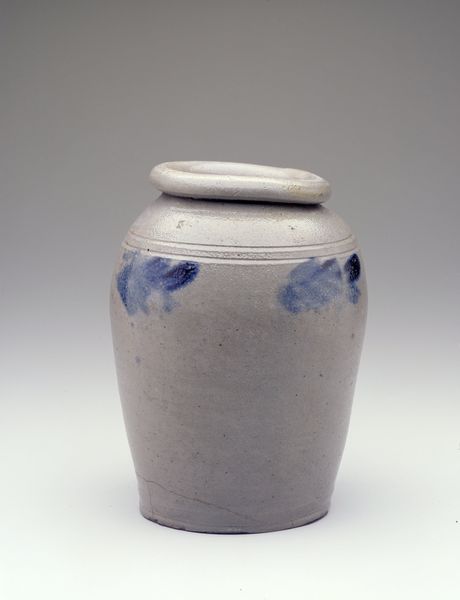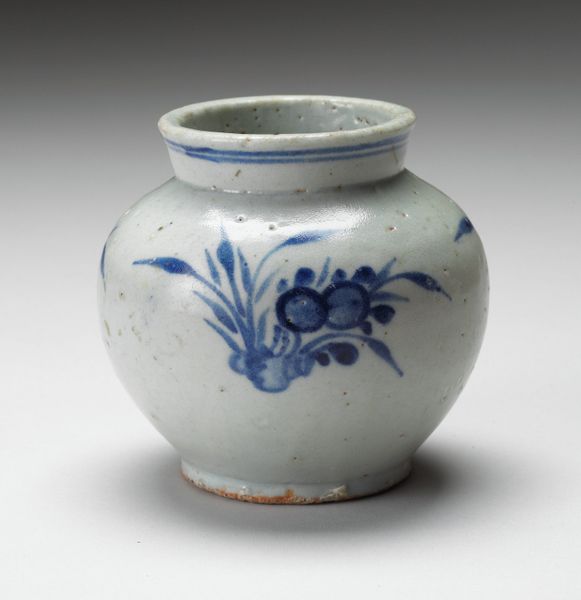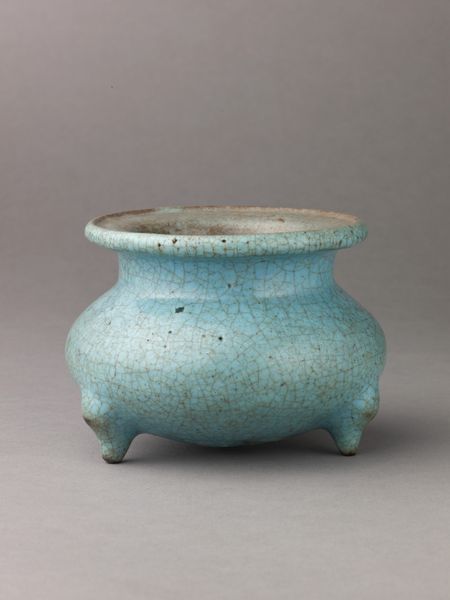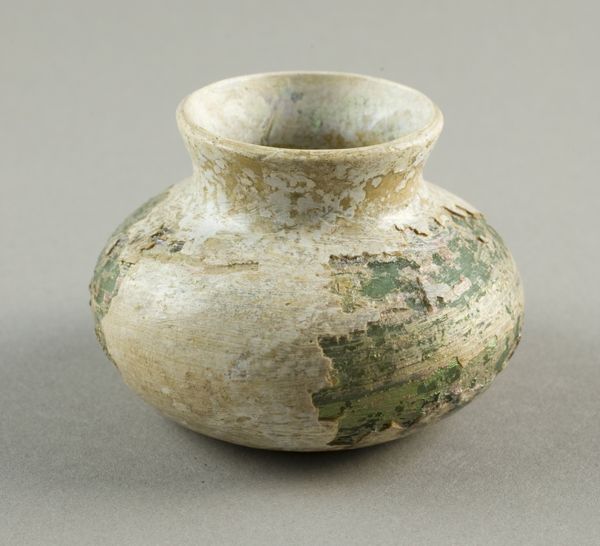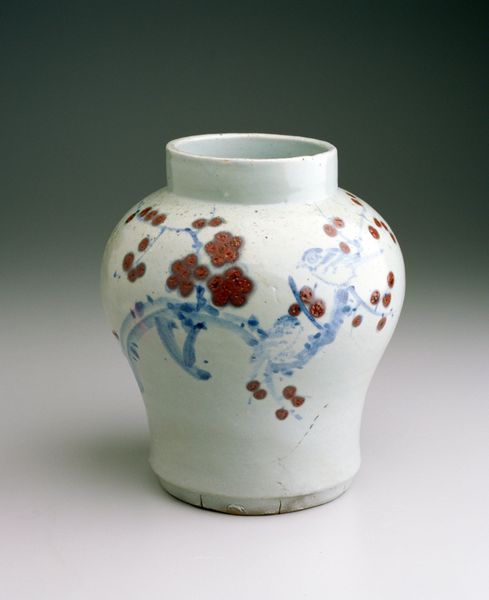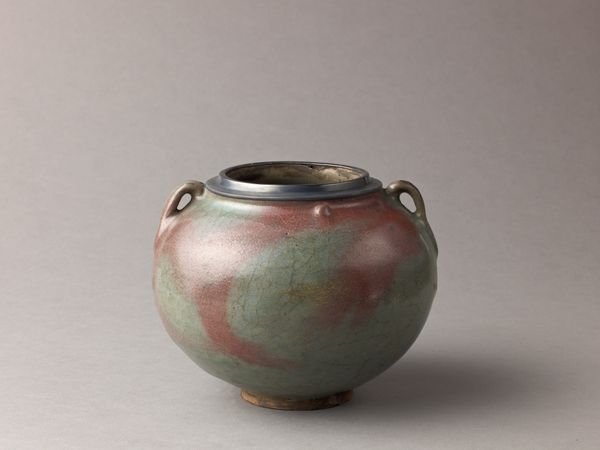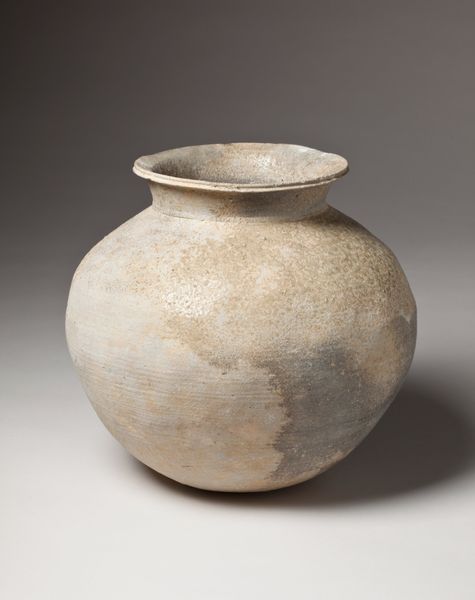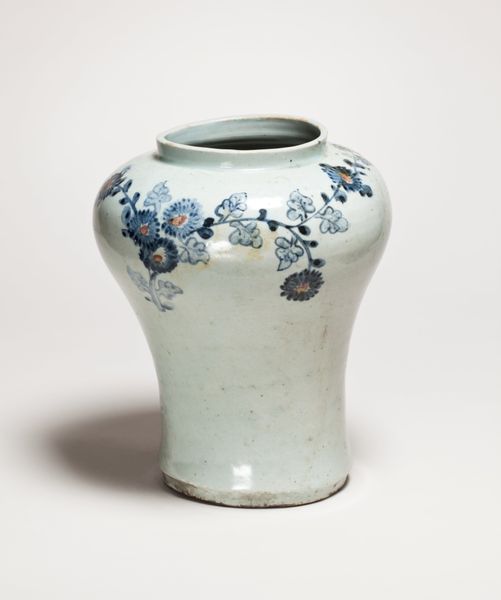
ceramic
#
medieval
#
asian-art
#
ceramic
#
form
#
ceramic
Dimensions: 4 1/4 x 4 15/16 in. (10.8 x 12.54 cm)
Copyright: Public Domain
Curator: Welcome. Before us is a ceramic jar, believed to be from the 12th to 14th century, a beautiful example of Asian art currently residing at the Minneapolis Institute of Art. Editor: It's remarkably understated. The soft celadon glaze gives it a meditative quality, almost whispering of stillness and quietude. Curator: Precisely. Consider the form; the subtle curvature, the way it swells and tapers slightly at the base. It's a masterclass in balance. The muted glaze, devoid of strong hues, pushes us to appreciate the beauty of the object through form alone. It encourages contemplation of its very essence, free from distraction. Editor: But is that stillness deceptive? Ceramic production during this period was often intensely gendered, racialized, and politicized. Underneath that smooth surface, one could read complex power dynamics concerning who had access to resources, who performed the labor, and for what purposes this object was intended. Curator: While that reading isn't unfounded, consider the overall execution. Note how the light plays upon the barely-there floral carvings around the shoulder. These subtle decorations enhance its form without overwhelming it. They provide just enough visual interest, preventing the piece from appearing monolithic or static. This serves not only to highlight its formal perfection but speaks volumes for the mastery of the craftsmanship, regardless of the social background of the person/people that produced the piece. Editor: Absolutely, but appreciating that craftsmanship also means recognizing it occurred within very specific historical contexts, ones where resources and training were unevenly distributed. By only talking about beauty or form, we ignore those power structures which allowed certain expressions, and forms, to survive. Curator: It’s difficult to deny the existence of those circumstances. Even so, isn't there an intrinsic worth to experiencing and interpreting this object through our modern sensibilities? Do those circumstances then necessarily detract from the jar's aesthetic properties, and ability to stand alone as a work of art? Editor: It complicates our viewing. By acknowledging historical context, we foster dialogue concerning the intersectional narratives the work sparks within our modern age. Ultimately, appreciating a piece isn't about choosing just one side; it’s about integrating different facets of experience to enrich our perception. Curator: Perhaps the real beauty then lies in our willingness to have that discussion, in permitting the piece to exist as both an artifact of immense visual and textural beauty, but also as a focal point of social commentary. Editor: A truly rewarding consideration for us all.
Comments
No comments
Be the first to comment and join the conversation on the ultimate creative platform.
